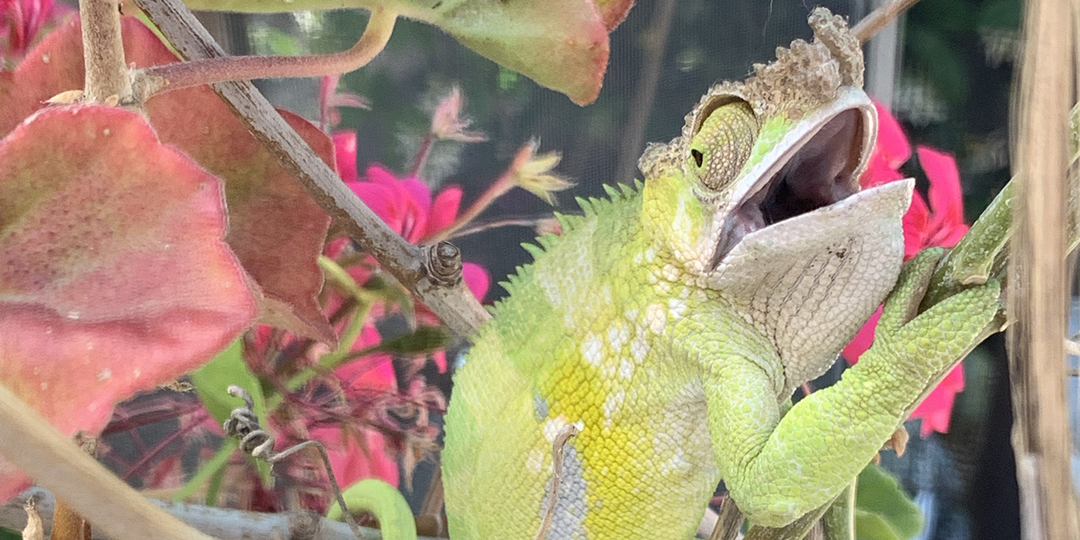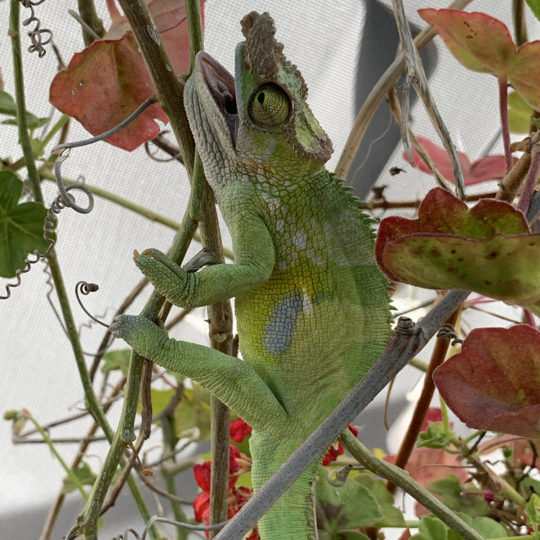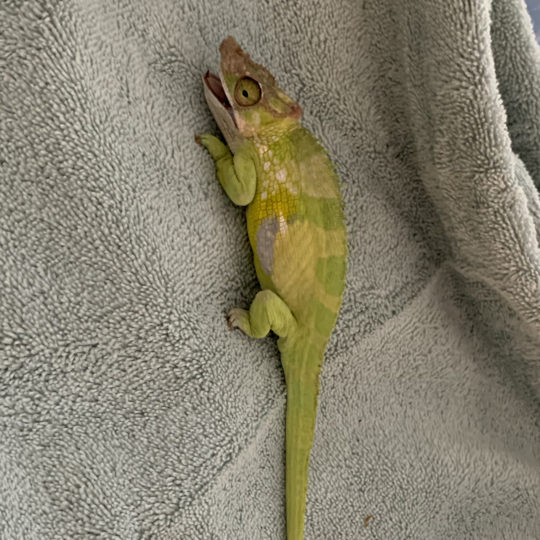Heat Stress
Description
Chameleons, like all animals, have a certain range of temperatures in which they function best. They move themselves in and out of warm and cool areas to maintain this range. When they are forced to endured higher than optimal conditions they will attempt to cool down, but their body will start shutting down if they are unsuccessful in their attempts.
Chameleons that are overheating will do the following:
- Move closer to the ground to be in deeper shade and closer to the coolness that shade and earth can provide.
- Lighten their color to reflect light instead of absorbing light as darker colors would.
- Gape and breath through their mouth to release any trapped heat.
If these efforts are not successful you will see signs of body failure including
- Eyes sinking in
- Losing the ability to grip their branch
- Eyes closing
- Death
Heat stress is fatal and must be taken seriously.
Keepers most often run into heat stress when they put their indoors cage outside for their chameleon to get some unfiltered sunlight. Indoors cages are set-up to handle a basking bulb – not the sun. The sun blasts through most indoors cage set-ups. Add this to the bottom of the cage being a solid plastic panel and you get sunlight reflecting from the bottom and the chameleon gets cooked from above and below. The point where keepers get in trouble is that they set up the cage in an area that has indirect sunlight or is in partial shade. Since conditions are perfect the keeper goes inside to attend to other chores. And, I am sure you know the ending to this sad story. The sun moves position in the sky and the cage is then blasted with the full power of the sun. It is amazing how fast this condition can kill a chameleon. And it is a heartbreaking lesson to learn. Unfiltered sunlight is an incredible health benefit. Just, please, be careful when providing it to your chameleon.

Symptoms
Symptoms of heat stress include faded skin color, gaping mouth, and lose of body function.
One afternoon the temperatures spiked past 100 F which was beyond his comfort range and into the danger zone. All chameleons were checked and, as is the trap, Sarge’s cage was between the large tree and house shadow so got blasted by the full sun. He lives in a heavily planted cage with a soil bottom so there was ample protection, but past 100 F there is only so much that can be done. He exhibited loss of ability to grip, washed out colors, gaping, and sunken eyes.
We reacted quickly to the temperature spike so he was not affected enough to not “come to” when he saw humans come to his cage. This was an excellent sign. The first thing we did was mist his entire cage with a gentle and luke warm mist. The water cooled down the entire cage area and gave him the opportunity to rehydrate and reverse the heating.
Treatment
Your immediate job is to cool down your chameleon. You have to do it in a way that does not shock their system so do not take your chameleon from 100 F weather and put him in the refrigerator. (I know you think I am kidding). A spray of water or bringing the chameleon indoors is a great way to do an initial temperature drop. Spritzing the body with cool water will help. If the chameleon is responsive then you should be able to rehydrate him through normal means and hold him in a cool area until he recovers and temperatures go down.
If you chameleon is not responsive then you can drip water on his tongue being careful not to put in so much that he can choke on it. An emergency visit to a veterinarian can get fluids inside your chameleon, but you need to get there immediately. If this is an emergency room call ahead to ensure they take chameleons.







